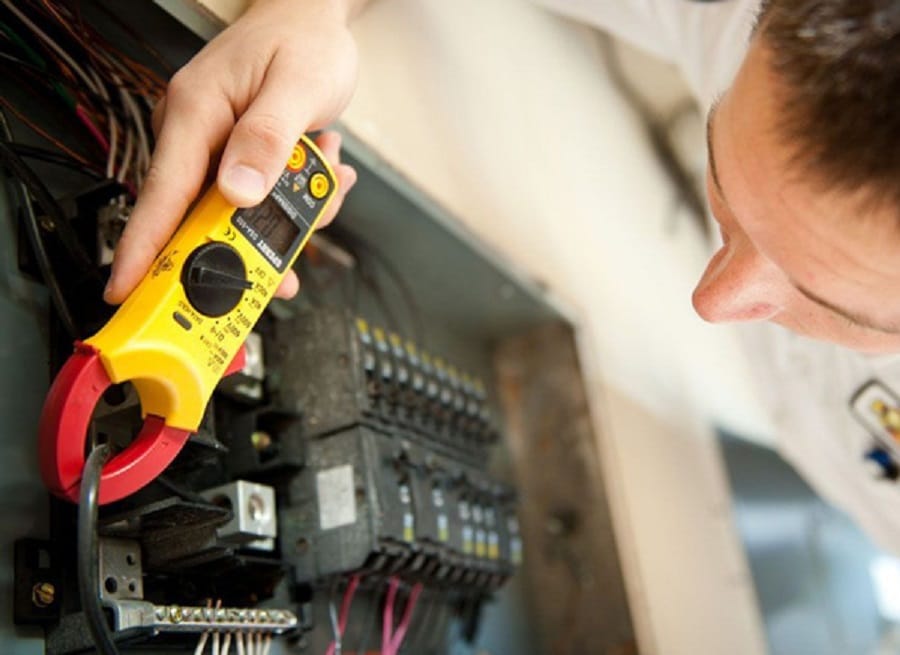Inspection, Services
Importance of Electrical Safety Inspections (NFPA99) in Healthcare Facilities
Technology and healthcare have synchronized, and today, it is no wonder that electrical devices are found in the rooms of patients in every hospital. Over the years, the healthcare system has developed concepts that have been able to help ensure that the healthcare environment is safe for patients, physicians and caregivers. The electrical safety inspections came in as a parameter through which the safety of the hospital equipment could be tested so that it is safe when it comes into contact with those in a healthcare organization. One of the first organizations to publish standards to this effect is the NFPA- National Fire Protection Agency, stating its guidelines under NFPA99 (Standards for Health Care Facilities).
These guidelines create awareness in a medical facility, such that the hospital knows if there is any improperly grounded or defective medical equipment. The NFPA 99 has distinct guidelines for equipment that are used both inpatient and patient-restricted areas of a healthcare organization environment. The requirements discussed below, however, mainly apply to patient care areas as outlined in the NFPA 99.
Safety Grounding
Safety grounding is a method through which harmful leakage current from hospital equipment is drained off, and is also used to blow or disable fuses in case a grounded metal case experiences shorts. Safety grounding requires that three wire connection (chassis ground, neutral and hot) and three pin plugs be used in the patient care settings. The only exception, in this case, is double insulated devices that may have cords with two conductors. Ground to Chassis resistance is measured to ensure that a device is safe for use. A safe device’s resistance should be under 0.50 ohm. This resistance should be checked before leakage current tests.
There are two types of leakage currents; capacitive and resistive current. Capacitive currents typically form between oppositely charged surfaces, for instance, one neutral and one hot wire thus, this type of current strays from its intended path. Resistive currents, on the other hand, are a result of resistance insulation around transformer windings and power wires. Safety ground wires are usually added to reduce excessive leakage currents from the chassis which may easily come into contact with both patients and caregivers, causing unprecedented injuries.
Chassis leakage current testing should be done before installation of fixed equipment because, at this point, it is temporarily insulated from the ground. For permanently wired equipment, the leakage current should not exceed 5.0 milliamperes. The chassis leakage current for portable equipment should not exceed 300 microamperes. For multiply-connected devices, if more than power cord is supplying power, the devices should ideally be separated into different groups according to their power supply and leakage current be measured according to the groups. If the power supply is single, the leakage current should be measured as a single assembly.
Lead Leakage Test
- Isolated Input- Lead to Ground. To measure the leakage current between ground and patient lead for an appliance with isolated leads, connect the power plug normally. With the ground intact, the leakage current should be below 10 microamperes. With the ground open, leakage current should not exceed 50 microamperes.
- Isolated Input-Between Leads. The leakage current between one lead and another should not exceed 50 microamperes with an open ground and 10 microamperes with intact ground.
- Non-isolated Input-Lead to Ground. To measure non-isolated input, connect the power plug normally. With both an open and intact ground, the leakage current should not exceed 100 microamperes.
- Non-Isolated Input-Between Leads. With the ground wire both open and closed, leakage current should not exceed 50 microamperes.
- Isolated Input-Isolation Test. This applies to appliances with isolated leads. It is the measurement of the current that is driven into the leads when an external power source is applied between individual leads and the ground. Leakage current should not exceed 50 microamperes.
Safety precautions
- The meter should be isolated and a momentary switch used.
- Include resistance in series to effectively limit currents
- Make measurements for appliances with exposed conducive surfaces and without a power cord in a temporarily grounded condition.
Tips
- Lead current tests are only necessary after repairs or modifications to equipment as the integrity of the system may be compromised or before inspection.
- Electrical appliances used during patient care in general care areas should be tested at least every twelve months and those in wet locations and critical care areas every six months. However, if your facility is accredited, these tests are mandatory.
- Use an isolation monitor to check impedance from all isolated circuit lines to the ground as it will warn when low impedance to the ground develops or when a fault occurs.
Importance of Preventative Maintenance
Well-functioning medical equipment is a critical tool for the healthcare profession. Healthcare personnel have a chance to make more accurate diagnosis and monitor the health of patients while operating efficiently all around the hospital. A failure in medical equipment can have dire consequences for the patient and affect their safety. In a bid to maintain quality services in a hospital, the practice can adopt preventive maintenance for medical equipment. Preventative maintenance is important because:
- It ensures the safety of the patients and medical staff because the potential causes of breakdown can be identified and resolved. Also, it improves the standing of a facility in regards to professionalism. Dysfunctional equipment sends a message of unprofessionalism and irresponsibility to the patients who may view care as substandard.
- It allows efficiency in service. This proactive approach is a way through which the hospital can plan for a device that may go out of service, thus allowing the facility to serve patients better.
- It is a cost-saving approach. Preventative maintenance can save a facility significant costs because repairs are costly compared to maintenance. Preventive maintenance helps a facility get greater returns on equipment investments and is less costly over time.
Calibration/Performance Inspections for Equipment
The NFPA 99 also set standards in regards to calibration and performance inspections for equipment. Calibration and Performance inspection standards, therefore, ought to be administered according to NFPA regulations. A facility can seek the services of a service company that uses certified equipment during performance checks and calibration. The facility should also ensure that maintenance and calibration are done according to the manufacturer’s instruction and recommendation. A typical equipment check and calibration involves taking of equipment inventory, acquisition. By following accreditation standards and regulatory codes, a facility is considered a prudent practice and is following all the guidelines for maintaining an accredited facility’s equipment.

